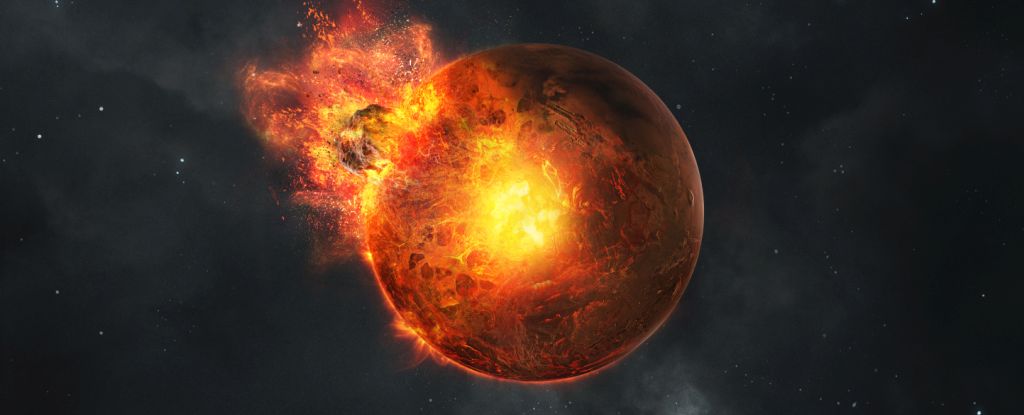
A groundbreaking analysis of Mars’ interior has revealed that the planet harbors substantial geological remnants from its early formation, indicating a tumultuous history. Researchers, led by planetary scientist Constantinos Charalambous from Imperial College London, studied seismic data collected by NASA’s InSight lander, uncovering significant insights about the Martian mantle and crust.
This research, published in the journal Science, indicates that Mars’ mantle contains large fragments of ancient crust, some measuring up to 4 kilometers (approximately 2.5 miles) across. These fragments, preserved for over 4.5 billion years, serve as geological fossils from a time when the solar system was chaotic, with massive collisions reshaping the terrestrial bodies.
The InSight lander operated on the Martian surface from 2018 to 2022, monitoring seismic activity to gather data. The seismic waves generated by marsquakes and meteorite impacts provided scientists with a unique opportunity to map the interior of Mars, similar to an acoustic X-ray. By analyzing how these waves traveled through the planet, researchers created a detailed picture of its geological structure.
Unraveling Mars’ Violent History
The findings suggest that Mars underwent a violent phase during its early years, characterized by collisions that released enormous energy, melting portions of the planet into vast magma oceans. As these oceans cooled, they crystallized, leaving behind distinct chunks of material. Charalambous stated, “These colossal impacts unleashed enough energy to melt large parts of the young planet into vast magma oceans. As those magma oceans cooled and crystallized, they left behind compositionally distinct chunks of material – and we believe it’s these we’re now detecting deep inside Mars.”
Unlike Earth, which features a dynamic crust divided into tectonic plates, Mars has a single, stable crust. This lack of tectonic activity has allowed the Martian interior to remain relatively unchanged, preserving ancient geological evidence. Charalambous noted that “most of this chaos likely unfolded in Mars’s first 100 million years. The fact that we can still detect its traces after four and a half billion years shows just how sluggishly Mars’s interior has been churning ever since.”
Implications for Planetary Science
The research offers valuable insights into the geological history and evolution of rocky planets. Understanding Mars’ relatively stagnant interior can provide clues about the internal processes of other planets, such as Mercury and Venus, which remain largely mysterious.
The study’s findings emphasize the importance of Mars as a key reference point for understanding the evolution of rocky bodies in our solar system. The preserved ancient mantle heterogeneity on Mars offers a unique window into the geological history of terrestrial planets. Researchers argue that this evolution holds crucial implications for assessing the preconditions for habitability of rocky bodies beyond Earth.
Overall, this research not only enriches our understanding of Mars but also contributes to the broader field of planetary science, revealing the various ways in which rocky planets can evolve over billions of years.







